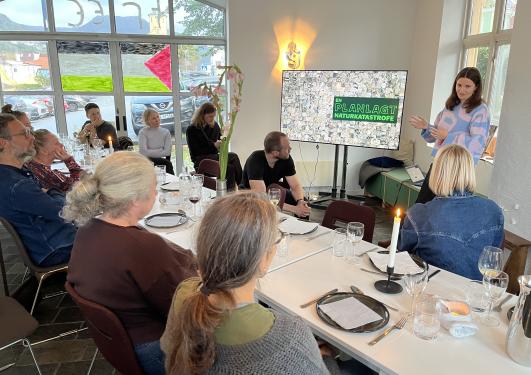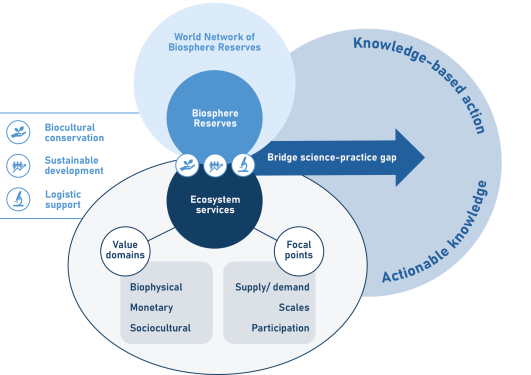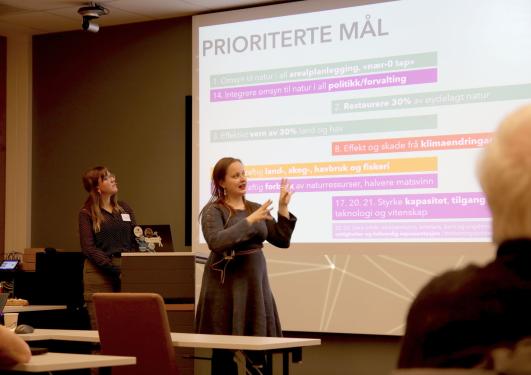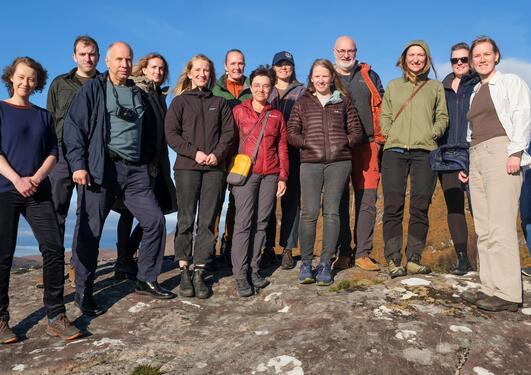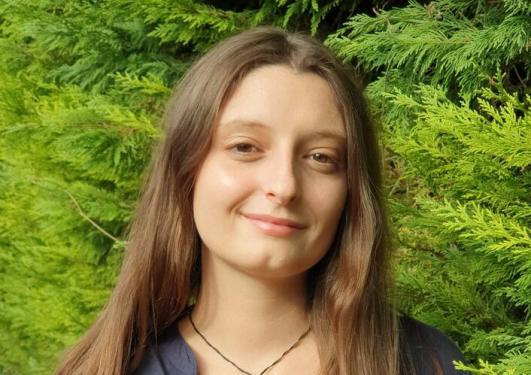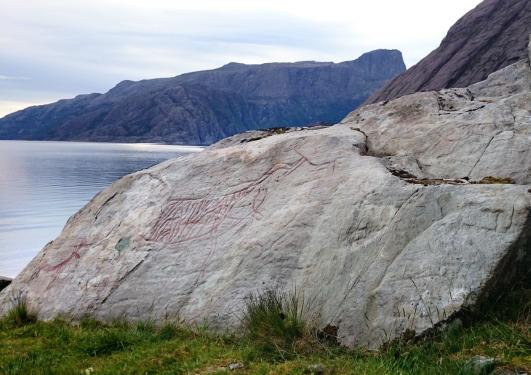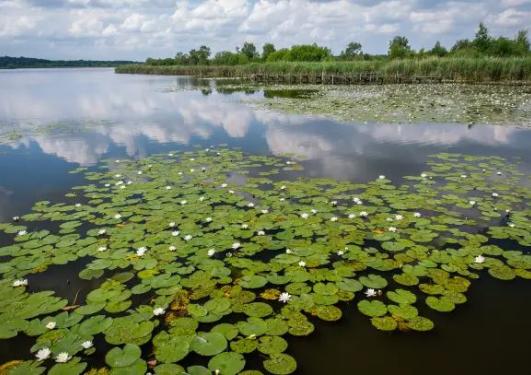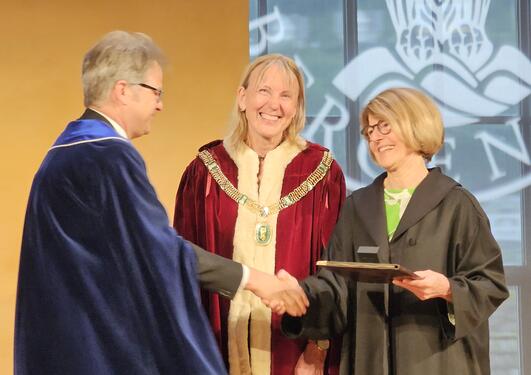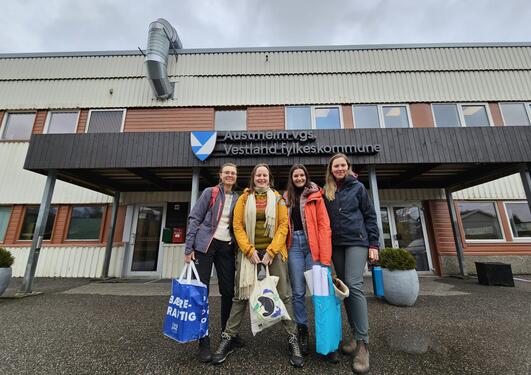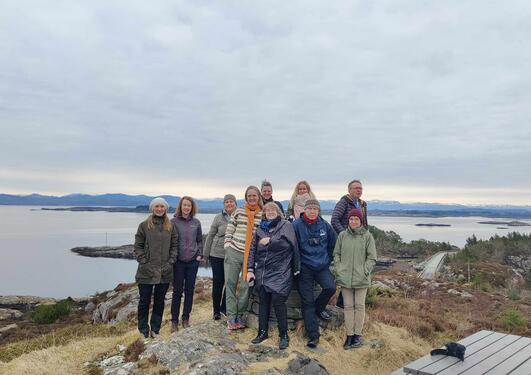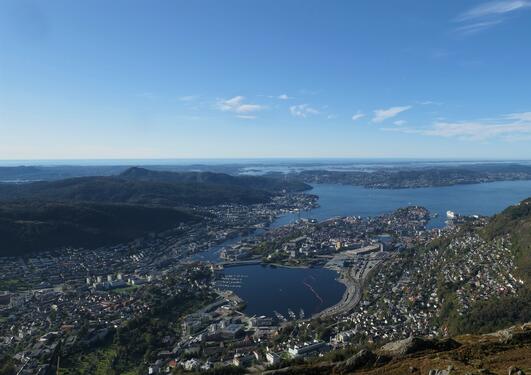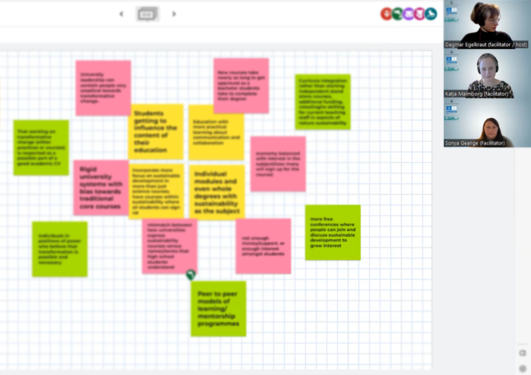News archive for UNESCO Chair: Sustainable heritage and environmental management
As part of the transdisciplinary collaboration between science, arts, and local communities within the ACTIONABLE research project, the first NIMBLE WEAVERS Kitchen Dinner took place on 21st September 2025, at Hordaland Kunstsenter.
A new report has just been launched highlighting how to accelerate the Kunming-Montreal Global Biodiversity Framework through a network of sites working for sustainability and nature conservation.
PhD candidate Janne Thomsen and researchers Jarrod Cusens and Inger E. Måren from UiB's UNESCO Chair on Sustainable Heritage and Environmental Management recently had their review paper published in Current Opinion in Environmental Sustainability. The paper reviews recent ecosystem services approaches in the World Network of Biosphere Reserves and explores how ecosystem services research supports... Read more
UNESCO Chair Inger Måren peer reviewed recent UNESCO report on how UNESCO sites can be utilized in education for sustainable development.
The UNESCO Chair project BECOME, is one of the initiatives mentioned in the newly published UNESCO report “The Earth Network: sharing tools for biodiversity conservation and sustainable development in UNESCO-designated sites”, where they present a toolkit of practices that support both the 2030 Agenda and UNESCO-designated sites.
The CULTIVATE project recently had its first paper published in Current Opinion in Environmental Sustainability. In this paper, the authors present a novel
transdisciplinary learning framework that links notions of cultural heritage, landscape, and social-ecological systems thinking to support sustainable rural development.
In December, the BIOSPHERE project group held a dialogue meeting about the Global Biodiversity Framework goals with stakeholders from the Nordhordland municipalities as the finally of the resilience assessment that has been taking place this autumn.
After 3,5 years, the CULTIVATE project is coming to an end. During the first week of November, members of the UNESCO Chair Group met the other project partners for a final event in Edinburgh hosted by the Centre for Mountain Studies at the University of Highlands and Islands, followed by a last project meeting, and a tour of Wester Ross Biosphere Reserve.
This autumn, the UNESCO Chair project BIOSPHERE are researching how Norwegian municipalities can work with the Global Biodiversity Framework, and use Alve – the biggest municipality of Nordhordland UNESCO Biosphere – as an example. They held their first of three meetings about this in September.
In 2021, Marie Curtet investigated the evolution of stakeholder participation in European UNECO Biosphere Reserves, and what challenges and opportunities rose from the COVID pandemic and the digital shift as part of her MSc thesis. Curtet was supervised by UNESCO Chair Inger Måren and Alícia Barraclough, and her findings was recently published in The Journal of Environmental Policy & Planning...
Are irreplaceable natural and cultural values in Western Norway in danger of being destroyed by industrial development? For some time, there has been debates about future industrial development in the western Norwegian municipality of Bremanger. UNESCO Chair for sustainable heritage and environmental management, Inger Måren, is engaged in this debate.
UNESCO recently welcomed 11 new areas into the family of Biosphere Reserves. Two of the countries, Belgium and Gambia, are recieving their first ever BR designations. The other nine countries recieving new biosphere designations are Colombia, Dominican Republic, Italy, Mongolia, the Netherlands, the Philippines, South Korea, Slovenia and Spain.
For the second time, Nordhordland UNESCO Biosphere hosted the now annual Biosphere Day 30 May 2024. This years’ theme was Green transitions: Energy, land-use pressure and nature in Nordhordland. Politicians, municipal employees, researchers, and businesspeople all attended to discuss the future needs of the region.
“When you give nature a chance, a difficult situation can quickly be reversed. However, in order to do that, decision-makers must have the knowledge they need to take the right measures”
- Anne Larigauderie
This spring, the UNESCO Chair group has been working with collecting positive future visions for sustainable nature, land-use and cultural landscapes. Most recently, workshops were held with students from two different high schools in Nordhordland biosphere reserve.
As the CULTIVATE project has entered its final year, it was time for the project's third in-person meeting. After visiting the biosphere reserves Trebon Basin and West-Estonian Archipelago previous years, members of the UNESCO Chair Group and the biosphere coordinators from Nordhordland UNESCO Biosphere Reserve were happy to finally greet our colleagues in Western Norway.
Klima- og miljødepartementet leder arbeidet med to stortingsmeldinger som skal legges fra ila. 2024; en om naturmangfold for å følge opp den internasjonale naturavtalen, og en om klima fram mot 2035 på veien mot lavutslippssamfunnet i 2050. UNESCO Chair Inger Måren har bidratt med innspill til regjeringen på vegne av CeSAM, Nordhordland UNESCO biosfæreområde, og den norske MAB-komiteen.
February 7th the Centre for Sustainable Area Management (CeSAM) and the UNESCO Chair on Sustainable Heritage and Environmental Management hosted a student work shop during Day Zero of the 2024 Sustainable Developmental Goals (SDG) Conference.
Pages
- October 2025 (1)
- September 2025 (1)
- May 2025 (1)
- March 2025 (1)
- February 2025 (1)
- January 2025 (1)
- December 2024 (1)
- November 2024 (1)
- September 2024 (1)
- August 2024 (2)
- July 2024 (1)
- June 2024 (1)
- May 2024 (2)
- March 2024 (1)
- February 2024 (3)
- January 2024 (2)
- December 2023 (2)
- November 2023 (2)
- October 2023 (1)
- September 2023 (1)
- August 2023 (2)
- July 2023 (1)
- June 2023 (3)
- May 2023 (2)
- April 2023 (1)
- March 2023 (1)
- February 2023 (1)
- December 2022 (13)
- November 2022 (1)
- September 2022 (2)
- July 2022 (2)
- June 2022 (1)
- April 2022 (1)
- March 2022 (1)
- February 2022 (1)
- May 2021 (1)
- March 2021 (1)
- March 2020 (2)
